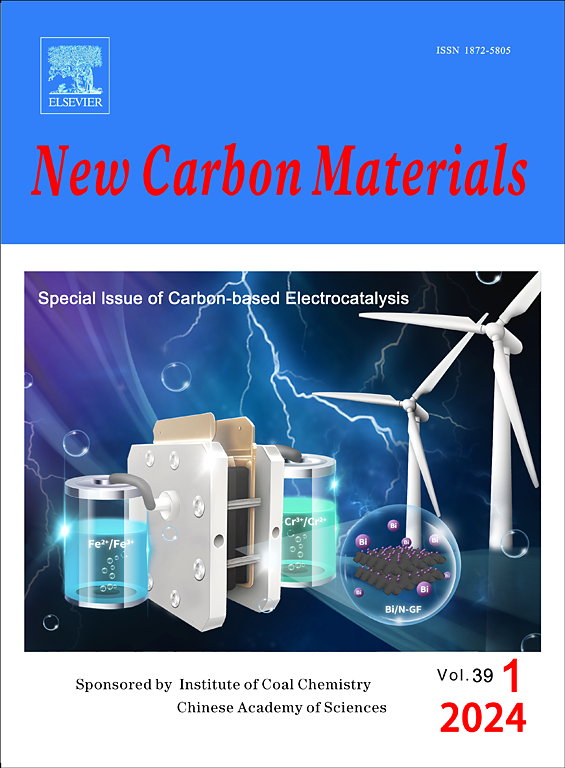Plasma-assisted preparation of NiCoAl-layered double hydroxides with alarge interlayer spacing on carbon cloth forelectrochemical deionization
Abstract
Capacitive deionization has been considered an emerging desalination technique in recent years, especially for its economic and energy-saving characteristics for brackish water. However, there are currently few studies on chloride ion removal electrodes, and the slow desalination kinetics limits their development. Ar-NiCoAl- layered double hydroxide (LDH)@ACC materials with an increased interlayer spacing were prepared by the in-situ growth of NiCoAl-LDHs nanosheet arrays on acid-treated carbon cloth (ACC) and subsequent Ar plasma treatment. The carbon cloth suppresses the agglomeration of the NiCoAl-LDHs nanosheets and improves the electrical conductivity, while the plasma treatment increases the interlayer spacing of NiCoAl-LDHs and improves its hydrophilicity. This provides rapid diffusion channels and more interlayer active sites for chloride ions, achieving high desalination kinetics. A hybrid capacitive deionization (HCDI) cell was assembled using Ar-NiCoAl-LDHs@ACC as the chloride ion removal electrode and activated carbon as the sodium ion removal electrode. This HCDI cell achieved a high desalination capacity of 93.26 mg g−1 at 1.2 V in a 1000 mg L−1 NaCl solution, a remarkable desalination rate of 0.27 mg g−1 s−1, and a good charge efficiency of 0.97. The capacity retention remained above 85% after 100 cycles in a 300 mg L−1 NaCl solution at 0.8 V. The work provides new ideas for the controlled preparation of two-dimensional metal hydroxide materials with a large interlayer spacing and the design of high-performance electrochemical chlorine ion removal electrodes.

 求助内容:
求助内容: 应助结果提醒方式:
应助结果提醒方式:


